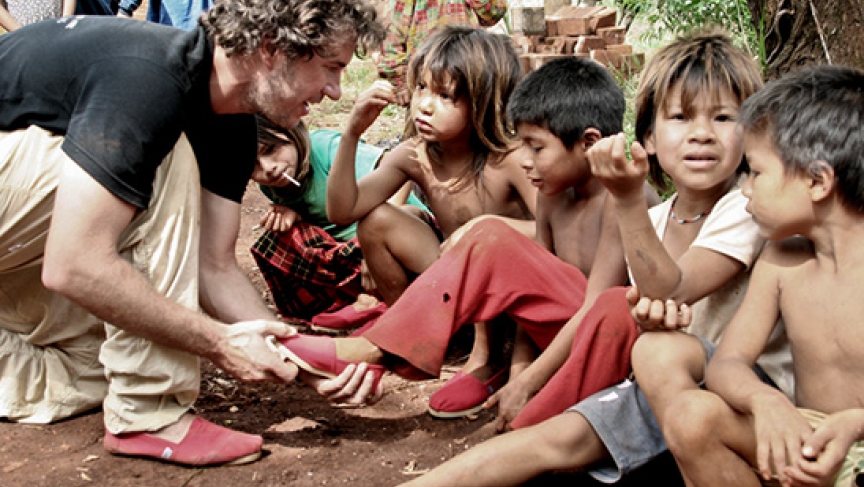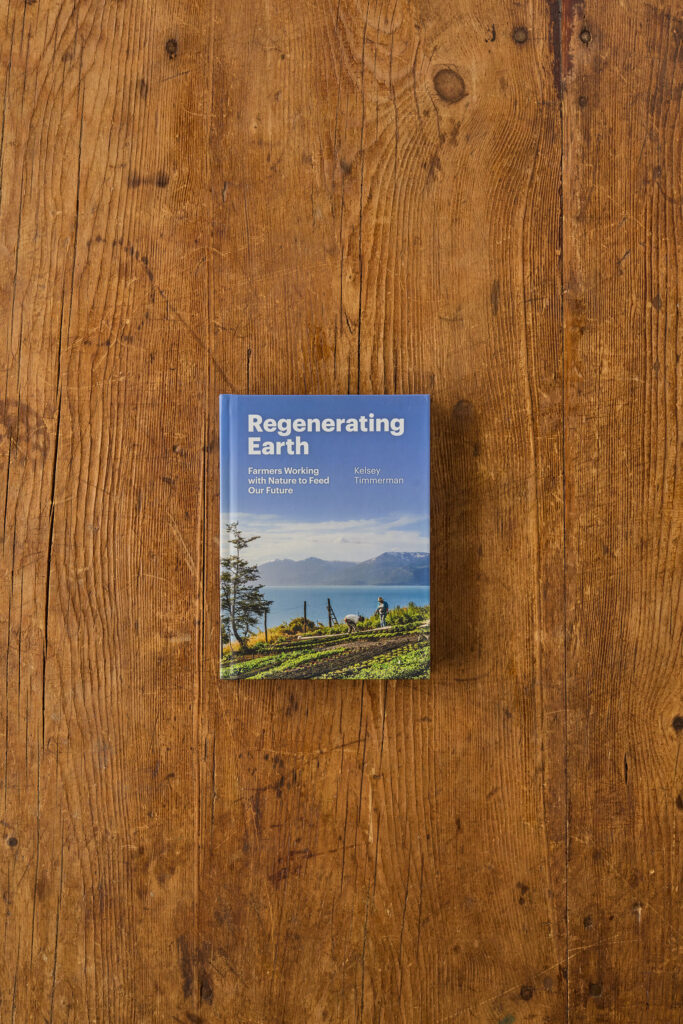
2013 Update: TOMS has taken many of the questions I and others have posed very seriously and are rethinking their model. They are opening a “responsible and sustainable” shoe factory in Haiti to provide opportunities/job to Haitians. They also plan on manufacturing their “giving shoes” in the countries where they are given.
These are very positive moves in the right direction. Kudos to TOMS. And kudos to all of the brave souls willing to speak out about how the TOMS brand could be used to make a real and lasting impact on our world.
More information here: http://www.pri.org/stories/2013-10-08/toms-shoes-rethinks-its-buy-one-give-one-model-helping-needy
READ MY 2012 UPDATE: 3 Things Criticizing TOMS Shoes Taught Me
“Can anyone think of a brand that will talk about the workers who make their products and seeks to make a positive impact on the workers’ lives?”
I often ask this question when I talk to students across the country. The students look around the room before finally someone raises their hand, and, even though I’ve told them 10 times already that there is no need to raise your hand, they’ll say…
“Um…TOMS shoes?”
Most students have heard of TOMS shoes and their Buy One Give One (BOGO) model — when you buy a pair of shoes they give a pair to some poor kid in some far corner of the world who doesn’t have shoes.
Usually a few pair of students are wearing TOMS and they slowly begin to nod like they are contestants on Family Feud and grandpa just gave a good answer.
“Okay…” I say. “Where were your TOMS made?”
This is when things get a little socially awkward. Many folks who wear TOMS do so without socks. Studies show that someone wearing TOMS is 10 times more likely to have stinky feet.
Reluctantly the student slips off her shoe and searches for a tag.
“China,” she says, as the students sitting nearby pass out onto the floor. “They…were…made…in…China.”
That’s when the reality of TOMS begins to sink in. See, for the past 40 minutes I’ve been talking about garment workers around the world who I met on my Where Am I Wearing? adventure, including the couple in China that made my TEVA flip-flops. They work 100 hours per week, have to clock-out and return to work, and haven’t seen their son who lives in their faraway home village in three years.
Then we have the give a man a fish or teach a man to fish discussion, which I undoubtedly flub up and say, “It really comes down to the give a fish or teach a fish discussion.” (And really, if we could teach fish to jump in the boat isn’t that the best solution?) Then I have to get the analogy back on track and bring it home with the example of the Ethiopian shoe company, SoleRebels.
Impact of a job > impact of a free pair of shoes
SoleRebels employs around 100 workers. They pay three times the typical wage in Ethiopia. The company covers healthcare costs and sends the workers’ kids to school. It’s a universal truth that garment workers and shoemakers don’t want their kids to grow up to be garment workers and an education can ensure that.
The young Ethiopian woman who founded SoleRebels, Bethlehem Tilahun and I discussed TOMS.
“If you give a kid shoes,” she told me, “they wear out or they grow out of them, and then what do they have? If you give the kid’s parents a job, the whole family will always have shoes.”
Yes, someone giving you a pair of shoes would sure be nice if you didn’t have a pair. But a job that allows parents to send their kids to school could change your family tree forever.
Let’s say that every worker at SoleRebels has five kids (the fertility rate of Ethiopia). The workers send all five kids to school and since they have an education they don’t grow up to be shoemakers. They do something that pays better and they send their five kids to school. A job, a good job, has an exponential impact. Within a few generations the 100 jobs at SoleRebels have impacted tens of thousands of people. Within six generations, the jobs have impacted millions. Now imagine if SoleRebels sold as many shoes as TOMS. This isn’t just life-changing stuff, this is possibly country-changing, poverty-fighting stuff.
Shoelessness is a symptom of poverty
I met Blake Mycoskie the president of TOMS shoes last year and had the opportunity to hear his story. It’s an amazing story. He was in Argentina playing polo (I had a little trouble relating to the polo piece of the story) and accompanied a group of foreigners who were dropping off used shoes to a village. The experience changed Blake. He couldn’t believe that something like a pair of shoes could mean so much. Barefoot kids in this village weren’t allowed to go to school. Blake wanted to do something. He got with some local shoemakers in Argentina and had them make a few hundred pairs, which he hauled back on the plane to LA. He went store-to-store trying to sell them along with his BOGO model. A store picked them up, the LA Times did a story, and then the whole TOMS phenomenon exploded. Nordstroms was calling him up trying to place an order for thousands of pairs and Blake had to tell them that all he had was one duffle bag worth of shoes under his bed.
TOMS is a business that has become a movement, so much that it’s the first thought that blips into a student’s mind when talking about socially conscious purchases.
I don’t have a problem with TOMS, in fact, I believe they are more socially conscious than many of the shoe brands out there (that’s not saying much). They reach students and get them thinking about people in our world who can’t afford the luxury of a pair of shoes. If every person who slips on a pair of TOMS stops for a moment and thinks about that level of poverty, it can only lead to good things.
The One Day Without Shoes Movement promoted by TOMS took place yesterday. All around the country folks were walking around barefoot in solidarity with folks who well, are barefoot. Here’s a hilarious post about a fella doing it in New York. But the criticism of the movement from the “Hand-outs are bad aid” folks are valid and you can read them on my new favorite blog, Good Intentions Are Not Enough. The problem isn’t that people don’t have shoes. It’s that they don’t have the means to buy shoes.
The problem isn’t shoelessness. The problem is poverty.
A takeaway from the One Day Without Shoes movement of, “we need to give shoes to these poor shoeless people,” isn’t useful. But getting more people to think about poverty on this level is important and I think that’s something that the TOMS critics miss. I always say step #1 is getting people to give a shit.
However, I do wish that TOMS would not just give shoes on the back end, but give quality jobs on the front end. Then impact of TOMS, unlike like a pair of shoes, wouldn’t wear out.

